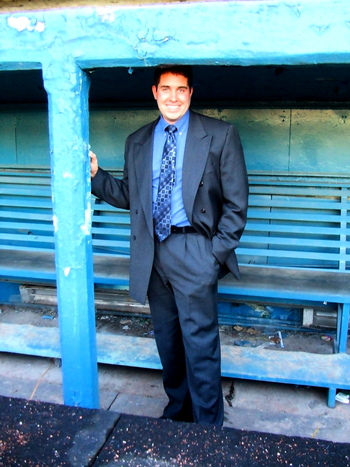This year’s induction class for the Baseball Hall of Fame will be announced on Tuesday. And once again Alan Trammell will be on the outside looking in despite some compelling arguments that he should be in. I won’t make a case for him because quite frankly I’m fully aware of my bias. He was one of my favorite players growing up (behind only Lou Whitaker who was royally shafted) and so it’s probably best if more objective parties make their cases for Tram’s inclusion.
But I do want to briefly tackle one issue that Trammell dissenters have cited. And really it’s an argument that I’ve only seen from Joe Sheehan. Sheehan dismissed Trammell’s defense saying that he was helped by the notoriously long grass at Tiger Stadium. That’s premium content so I’ll just quote the most germane part of the article here for you:
I’m wary of the defensive numbers on him, as his home park was notorious for its high infield grass. With so much of Trammell’s statistical case built on very good defensive stats at his peak, the twinge of doubt I feel about their validity makes me nervous.
And to paint a fair picture, this was only of several reasons that Sheehan listed for doubting Trammell’s candidacy so this isn’t a make-or-break argument. It sounded reasonable enough to me that I didn’t think twice about this argument.
Rob Neyer called for further investigation of the point. Neyer stated:
Two, while I’m intrigued by the notion that Trammell’s solid defensive credentials — he won four Gold Gloves, and Bill James has him as a Grade B-minus shortstop over his entire career — are partly the result of the high grass in the Tiger Stadium infield, I’d sure like to see somebody do some actual work on this one. Yes, sinkerballer Walt Terrell’s home/road splits were massive when he pitched for the Tigers, particularly from 1985 through ’87. But did other sinkerball pitchers fare particularly well in Tiger Stadium during Trammell’s career? Were Trammell’s fielding stats significantly better at home than on the road? If the grass was long and did lead to more plays for Trammell, did it cost him anything as a hitter?
Inspired by Neyer I decided to at least take a very crude look at what effect the grass had on ground ball hit rates. This isn’t exactly answering Neyer’s question or refuting Sheehan’s claim, but at least it is another data point. My methodology was to look at all groundballs hit, and see at what rate they produced baserunners. I then converted those rates to park factors.
The park factors are over 7 seasons – from 1982-1988. Why those years? It was two fold. First, it corresponded reasonably well with the peak of Trammell’s career. Second, there was no change over in ballparks during that time making the analysis a little more convenient.
Here is the table with my results:
Team PF
MIN 1.33
KCA 1.27
BOS 1.25
MON 1.21
DET 1.20
TEX 1.18
ATL 1.15
PHI 1.13
LAN 1.12
CHN 1.03
CIN 1.03
SDN 1.01
NYN 1.00
PIT 0.99
SLN 0.94
MIL 0.94
CHA 0.94
TOR 0.93
SEA 0.90
OAK 0.88
CAL 0.85
CLE 0.82
BAL 0.81
NYA 0.77
SFN 0.72
HOU 0.65
The higher values indicate parks where more grounders resulted in baserunners, and conversely the lower numbers would make the parks more favorable to the defenders. Tiger Stadium was one of the parks where more grounders resulted in baserunners – over 20% more – which would make Trammell’s defense more impressive, not less. Of course the same adjustment would have to be applied to Tram’s offense which could make his offensive numbers less impressive.
Explanations for this? Maybe the long grass slowed down balls too much meaning there were more infield hits. Perhaps the long grass, or bad infield dirt, led to more bad hops meaning more difficult plays or more errors. Or perhaps the grass wasn’t as long as it was reported, much like the 440ft dimension painted on the centerfield wall.
Caveats: I didn’t break it out and look at the impact by position. It could be that this is all the result of things being favorable down the lines. I don’t know. If Dan Fox continues working backward with SFR perhaps these types of issues can be uncovered. I have the data to do it, but the chances of me finishing it prior to Tuesday are slim. Maybe another day. Also, the Tigers had a great deal of stability at the time with their up the middle defenders meaning they are a large part of the sample. There was no regression or accounting for this – just straight arithmetic.
Still at a first glance it doesn’t appear that the long grass made the infielder’s jobs any easier at Tiger Stadium.
But this is all a moot point when it comes to Tram’s chances anyways. Tram has been hovering in the teens since being on the ballot and actually saw his numbers at their lowest in 2007 when he only had 13.4% of the vote. My hope was that with a weak ballot he could have maybe gained some steam and broken the 30% mark. However, Keith Law’s unofficial tally has him improving, but only to 22%.
I don’t view Tram’s exclusion as an egregious error. Even being a fan I don’t think it is a slam dunk case. Still, I don’t understand the voting disparity between Ozzie Smith and Trammell when you look at their entire body of work. That to me is the bigger injustice.
The information used here was obtained free of charge from and is copyrighted by Retrosheet. Interested parties may contact Retrosheet at 20 Sunset Rd., Newark, DE 19711.

